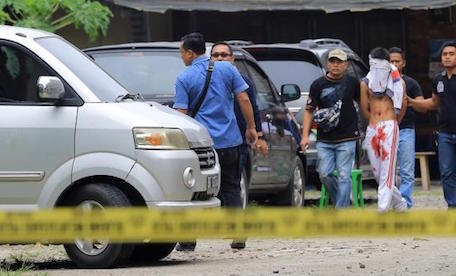The suicide bomb attack on a priest carried out by Ivan Armadi, a 17-year -old Indonesian was inspired by the murder of a French priest in July.
“He was imitating … the priest attack because of the internet,” General Tito Karnavian Jakata’s national police chief told foreign journalists.
However Armadi’s bomb-making skills, acquired over the internet, were amateurish and his suicide bomb belt failed to explode.
A woman sitting next to the would-be suicide bomber at St. Joseph Catholic Church in Medan told the Jakarta Post that she noticed the man was fidgeting throughout Mass and unable to follow the liturgy.
When Father Albertus Pandiangan began his homily the man connected two cables, presumably to detonate the suicide bomb, causing a small explosion.
According to reports in The Guardian, local chief detective Nur Fallah said the explosion was “like a firecracker, but the firecracker didn’t explode, it only fumed.”
Realising the suicide bomb had failed, the attacker ran toward a priest armed with an axe and a knife.
Parishioners were able to restrain him, and the priest suffered only a minor injury to the left hand, according to authorities.
Karnavian said police had found no indication Armadi had any contacts to Islamist networks in Indonesia.
He said the attack was considered a case of self-radicalisation and not sectarian violence rooted in tensions between religious communities in traditionally tolerant Indonesia.
It was a case of a “lone wolf”being radicalised over the internet.
Indonesia has the world’s largest Muslim population and the vast majority practice a moderate form of Islam.
But a small minority of militant Islamists has been growing in recent years, inspired in part by Islamist militant groups like al Qaeda and IS.
Source
Additional reading
News category: Asia Pacific, Top Story.




